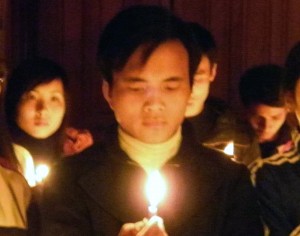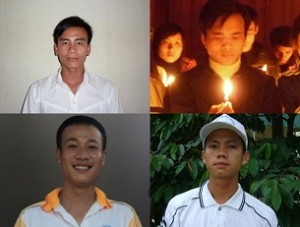Last line of Defence - Tuyến Phòng Thủ Cuối Cùng
Featured
-
Open letter to Diplomatic Missions of the democratic countries in Vietnam
-
Thư ngỏ của gia đình TNLT Trịnh Bá Phương gửi phái bộ ngoại giao các nước dân chủ
-
Imprisoned activist Trinh Ba Phuong charged for writing ‘down with communism’
-
TNLT Trịnh Bá Phương bị khởi tố khi đang thi hành án tù mười năm
-
Một thương binh bị bắt vì giúp người dân khiếu kiện
-
Thành viên thứ hai của Tập hợp Dân chủ Đa nguyên bị bắt tạm giam
-
Tù nhân chính trị ở Trại giam Xuân Lộc kêu cứu vì bị bỏ đói
Recent Comments
-
Height Insoles: Hi, I do believe this is an excellent site. I stumbledupon …
-
http://fishinglovers.net: Appreciate you sharing, great post.Thanks Again. Keep writi…
-
Achilles Pain causes: Every weekend i used to pay a quick visit this site, as i w…
Powered by WordPress • Themify WordPress Themes






October 26, 2016
Vietnamese Drug Users Make a Break for Freedom
by Nhan Quyen • [Human Rights]
Country’s Abusive and Overcrowded “Rehab Centers” Ruin Lives
Human Rights Watch, October 25, 2016
Late on Sunday night up to 600 people smashed through the walls and windows of a drug “rehabilitation” center in southern Vietnam and made a break for freedom. By mid-morning Monday, more than 300 had been recaptured and sent back to the center, while police searched for over 200 others.
This isn’t rare in Vietnam. Nearly 600 detainees broke out of a center in the northern city of Haiphong in May 2010, around 400 escaped a center in Hai Phong in September 2014, and another 450 fled a center in the country’s southern province of Ba Ria Vung Tau in April this year. There have been plenty other such escapes too.
Why are people so desperate to flee “rehabilitation” in Vietnam? Official Vietnamese media gave one reason for this latest breakout: overcrowding. The center has a capacity for around 600 people, but the number of detainees prior to the escape was 1,481.
The larger point is that these people shouldn’t be in these centers in the first place. When we researched conditions in drug detention centers in southern Vietnam, former detainees told us they were held without due process for up to five years, and subject to beatings by guards or held in solitary confinement in “disciplinary rooms” for breaking center rules. Not one of them described any form of scientifically or medically-appropriate drug dependency treatment.
So what do detainees do? The Ministry of Labor that oversees the centers calls it “labor therapy”. There’s no standard type of labor performed, although former detainees from many centers told us that cashew nut processing is common. Shelling five kilos of cashews – a typical daily work quota – requires one nut to be opened about every six seconds, at a rate of about 10 nuts per minute, for eight hours. Those who do not or cannot meet work quotas are beaten. Some detainees told us they did this six days a week for five years.
That’s not drug dependency treatment but forced labor. In 2012, the UN demanded Vietnam and other countries with drug detention centers close them and provide voluntary, community-based drug dependency treatment for those in genuine need. But Vietnam’s drug detention centers continue to ruin the lives of people who use drugs and subject them to years of abuse and forced labor. No surprise that those stuck in them are so desperate for their freedom.